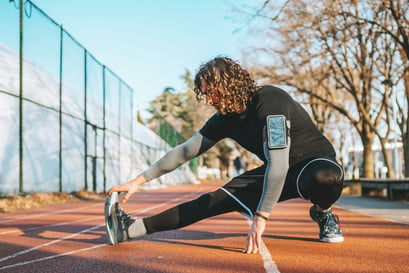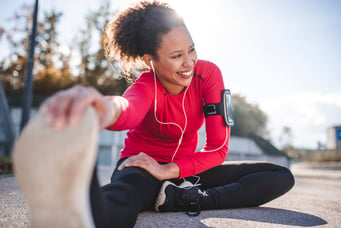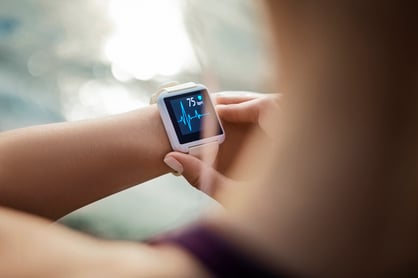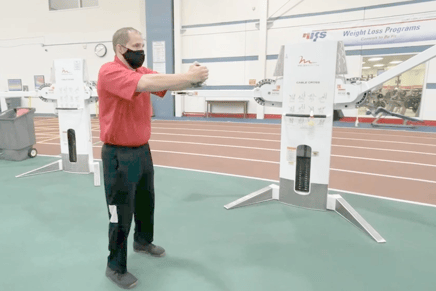 The benefits of strength training apply to individuals of all fitness levels, whether you're a professional athlete, a working adult, or an older adult looking to improve daily function and quality of life. Anyone can benefit from full-body strength training 2-3 days a week at moderate to high intensity for about 30 to 60 minutes. Here are several reasons why you should consider incorporating strength training into your weekly routine.
The benefits of strength training apply to individuals of all fitness levels, whether you're a professional athlete, a working adult, or an older adult looking to improve daily function and quality of life. Anyone can benefit from full-body strength training 2-3 days a week at moderate to high intensity for about 30 to 60 minutes. Here are several reasons why you should consider incorporating strength training into your weekly routine.
Preventing Injury
Strength training can limit or get rid of muscular imbalances between muscles in the front and back of your body, as well as between the left and right sides. According to Steve Yoon, the Chief of Sports Medicine at Cedars Sinai, these imbalances can cause injury because when one muscle is weak, the other muscles around it must compensate for that weakness, which can put increased strain or load on them and increase your risk of injuring them. However, when you strength train, you are strengthening these weak muscles as well as the surrounding muscles which decreases the likelihood of injury. In addition, strengthening muscles around joints to keep them functioning properly and prevent injuries like sprains, strains, dislocations, and tears in your joints.
Boosting Metabolism
Having a higher metabolism can make it easier to maintain or lose weight, as your body burns more calories both at rest and during physical activity. Strength training, particularly weightlifting, helps build muscle. Increasing muscle mass boosts your metabolism because muscles require more energy to function and enable movement. As a result, having larger muscles forces your body to produce more energy, which in turn increases your metabolism. This makes it easier to achieve your goals without having to work as hard.
Improving Quality of Life
The effects of strength training can improve your mental health in addition to your physical health. The reason for this is when you exercise it releases chemicals in your brain called endorphins. These are referred to as the “feel good” chemicals because they are known to reduce pain, boost your mood, and can help decrease stress and anxiety. In addition, as stated by campuslivingvillages.com, strength training has been shown to release more endorphins than doing cardio. Working out also keeps your body feeling, working, and looking its best, which can improve your day-to-day mood.
Maintaining Long-Term Health
Doing any weight bearing activities such as running or strength training improves your bone density and slows the decline of bone density over time, putting you at lower risks of fractures and osteoporosis into older age. Strength training specifically may also slow decline of muscle wasting as you get older, contributing to an improved quality of life so you can play with grandkids, be able to get in and out of bed easily and do all other activities of daily living easier and for longer.
Strength training provides numerous benefits, including injury prevention, boosted metabolism, and improved mental health, making it essential for individuals of all ages and fitness levels, which is why you should consider adding to your weekly fitness plan.
Figure out where to get started: Get a Free 30-min. Fitness Assessment with a Trainer


 Starting your fitness journey is always an exciting step forward, but it is essential to make sure you are listening to your body and prioritizing your recovery and self-care. Many people tend to neglect their bodies' needs and push themselves past their limits, which isn’t necessarily a bad thing. The importance of recovery and self-care play a crucial role in ensuring your long-term success in the gym, and one mistake can lead to a possible injury that can take away and/or limit that progress.
Starting your fitness journey is always an exciting step forward, but it is essential to make sure you are listening to your body and prioritizing your recovery and self-care. Many people tend to neglect their bodies' needs and push themselves past their limits, which isn’t necessarily a bad thing. The importance of recovery and self-care play a crucial role in ensuring your long-term success in the gym, and one mistake can lead to a possible injury that can take away and/or limit that progress.
 Shakira was onto something when she said, “My hips don’t lie.” Poor hip strength and mobility can lead to negative effects like lower back pain, poor posture, knee pain, and impaired balance, which is why improving hip health is crucial. But how can you build hip strength and mobility without a hip adductor and abductor machine? Read on to discover effective exercises to enhance hip strength!
Shakira was onto something when she said, “My hips don’t lie.” Poor hip strength and mobility can lead to negative effects like lower back pain, poor posture, knee pain, and impaired balance, which is why improving hip health is crucial. But how can you build hip strength and mobility without a hip adductor and abductor machine? Read on to discover effective exercises to enhance hip strength!
.jpg?width=537&height=358&name=GettyImages-1187356524(1).jpg) In an athlete’s world, every fraction of a second and inch of athletic performance are significant for them to play at their best on and off the field. However, being an athlete means consistently searching for innovative ways to elevate your game. This is where fascia training enters the conversation as one of the many ways of improving one’s athletic performance. Fascia training is an emerging topic that holds the promise of unlocking your untapped potential and improving your performance.
In an athlete’s world, every fraction of a second and inch of athletic performance are significant for them to play at their best on and off the field. However, being an athlete means consistently searching for innovative ways to elevate your game. This is where fascia training enters the conversation as one of the many ways of improving one’s athletic performance. Fascia training is an emerging topic that holds the promise of unlocking your untapped potential and improving your performance. 
 Everyone needs strong hips. Athletes need them to perform a wide variety of movements within a given sport. Aging adults need them to help reduce the risk of falls. When we think about the hip, most people think about the glutes and abductors. You can look in any gym and see a handful of people with a band around their knees performing a plethora of movements working the glutes and abductors. However, the most neglected muscle is the one on the inside of the thigh: the adductor.
Everyone needs strong hips. Athletes need them to perform a wide variety of movements within a given sport. Aging adults need them to help reduce the risk of falls. When we think about the hip, most people think about the glutes and abductors. You can look in any gym and see a handful of people with a band around their knees performing a plethora of movements working the glutes and abductors. However, the most neglected muscle is the one on the inside of the thigh: the adductor.  Chances are if you are like me, you have been told your whole life, “Make sure you’re stretching, it’s important!” But to many, the first thought that pops into their head when they think about stretching is, “Why?” And that is a very understandable response because stretching can involve a lot of discomfort (in the beginning) and to some, it might even cause a bit of pain. But there certainly is a method to the madness, and a reason why stretching is a vital component of your fitness program and, ultimately, your lifestyle.
Chances are if you are like me, you have been told your whole life, “Make sure you’re stretching, it’s important!” But to many, the first thought that pops into their head when they think about stretching is, “Why?” And that is a very understandable response because stretching can involve a lot of discomfort (in the beginning) and to some, it might even cause a bit of pain. But there certainly is a method to the madness, and a reason why stretching is a vital component of your fitness program and, ultimately, your lifestyle. .jpg?width=532&height=342&name=GettyImages-1083005864(1).jpg) Muscle Mass Gains
Muscle Mass Gains While training your cardiovascular system, it is important to understand how much you are stressing and overloading the system. Just like with your musculoskeletal system, there is a maximum rate your heart can achieve. The best way to discover this number is to undergo a maximal aerobic capacity test, but it isn’t necessarily practical or safe for all populations.
While training your cardiovascular system, it is important to understand how much you are stressing and overloading the system. Just like with your musculoskeletal system, there is a maximum rate your heart can achieve. The best way to discover this number is to undergo a maximal aerobic capacity test, but it isn’t necessarily practical or safe for all populations.  We all know that core stability and strength is an important factor in exercise, athletics, and even daily living. Being able to properly brace and stiffen the core is an important skill in preventing lower-back injuries when attempting certain movement patterns that occur every day. The abdominal crunch, which people often think of as a core exercise, is actually not a movement we see in our day-to-day lives. Try and think of a time you have had to mimic the abdominal crunch under a heavy load: it simply does not occur.
We all know that core stability and strength is an important factor in exercise, athletics, and even daily living. Being able to properly brace and stiffen the core is an important skill in preventing lower-back injuries when attempting certain movement patterns that occur every day. The abdominal crunch, which people often think of as a core exercise, is actually not a movement we see in our day-to-day lives. Try and think of a time you have had to mimic the abdominal crunch under a heavy load: it simply does not occur. 